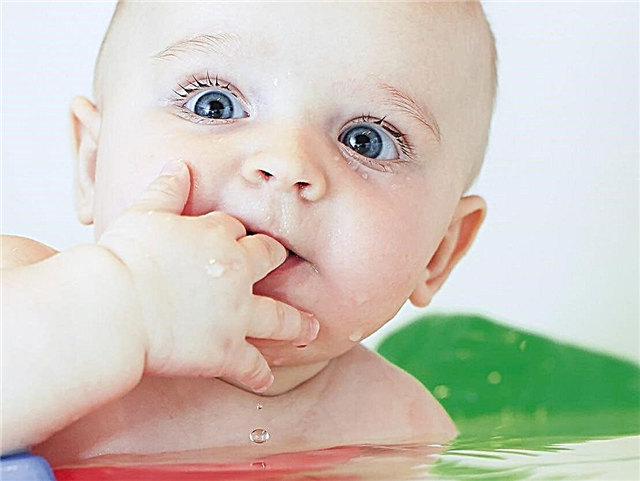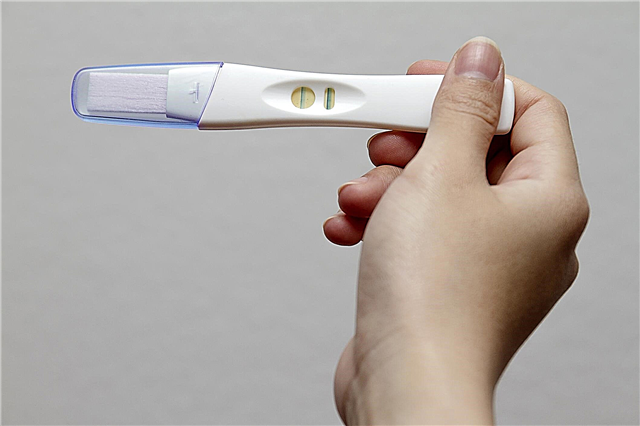
Each mother is looking forward to the appearance of the first tooth of her baby and hopes that the baby will avoid any problems that force her to be treated by dentists. And in order to understand if everything is in order with teething, parents should know when a child's milk teeth are normally cut and how many of them should be at a certain age.

Why are milk teeth needed and their differences from permanent
Milk teeth appear in children of the first years of life for:
- Opportunities to bite off food. This function is performed by the anterior narrow teeth called incisors.
- Thorough grinding and chewing food. To do this, the child develops wider teeth, which are called molars.
- Correct development of the chewing muscles.
- Participation in the normal development of speech.
- Formation of the basis of the correct bite. Milk teeth in the first 3-3.5 years are densely located, and then the jaw grows, which leads to their spreading and the appearance of gaps between the teeth. This is completely normal and should not bother parents.
The author of the next video will tell you what baby teeth are for a child.
In total, 20 teeth "hatch" in children, which Hippocrates called milk teeth, linking development and their change with breast milk.
They differ from those teeth that adults have in the following features:
- Smaller crowns.
- Thinner enamel.
- In a different color.
- Large pulp volume.
- Shorter and wider roots that diverge to the sides.

How and when does the first tooth appear
The issue of the appearance of the first tooth worries almost all mothers, especially if the peers of the baby with whom he communicates, he has already "hatched". The time of appearance is influenced by the individual characteristics of the baby, so you should not pay attention to other children and compare the baby with them.
Some of the babies will have their first tooth only at 8-9 months, and someone will please their mother with a knock on a spoon at 5 months or six months. Both earlier and later eruption occurs. And it depends primarily on heredity, but the nutrition of the crumbs and the presence of various diseases also play a role.
The state of the baby can tell the mother about the appearance of the first tooth, since children usually do not tolerate this painful process well. The gum in the place of appearance swells (a tooth mound appears), the salivation of the baby increases. Due to the pressure on the mucous membrane, the gums gradually become thinner.

Cholisal triple action dental gel can be used to relieve the symptoms of teething.®... When applied topically, the active ingredients of the drug are absorbed through the mucous membrane of the oral cavity, helping to relieve pain and inflammation, as well as acting on viruses, fungi and pathogenic bacteria. The adhesive gel base helps to retain the active substances on the mucous membrane, prolonging their action. It should be noted that Cholisal gel® does not contain lidocaine, and can be recommended for patients with lidocaine intolerance. Unlike some other local antiseptic and anti-inflammatory drugs, Cholisal® can be used in both adults and children. It is important to be careful when using in children under one year old and consult a doctor first.
The tooth moves upward, its root develops, the tissues under the tooth are rebuilt. When the crown cuts through the gum, it continues to grow until it is in a comfortable position to match the adjacent teeth. In some children, they grow in different directions, but when the entire dentition erupts, they tend to rub in and align.
Norms and scheme of eruption
Despite the fact that the timing of teething for each baby will be individual, most children have teeth in a specific order and at a certain age.
- At the age of 6-7 months, the central lower incisors, which are also called "ones", are cut.
- At the age of 8 or 9 months, a pair of "ones" is added to the child on top, after which at the age of 9-11 months, a pair of upper incisors, called "twos", are added to them on the sides.
- By about a year (in most babies at 11-13 months), "twos" are cut through on the lower jaw.
- Next comes the turn of "fours". This is the name of the first molars that appear at 12-15 months. The upper molars are cut first and then the lower molars.
- Fangs begin to erupt in babies 16-18 months old. These teeth, called "threes" for their location, appear first on the lower jaw, and then on the upper.
- From 1 year 8 months, second molars are cut in children, which are also called “fives” or posterior molars. They complete the eruption of deciduous teeth.

Quantity in the norm
To find out if everything is in order with teething in a toddler, parents should use the average data on the amount that appears in babies by a certain age. In most cases, doctors use the formula “age in months minus 4”.
According to this formula, the first two teeth appear at 6 months of age, and all 20 can be observed in most children over the age of 24 months.
Here is a table with the average number of teeth at a certain age of the child:

Teething problems
- Painful sensations in a child. To alleviate the condition of the crumbs, doctors advise using an anesthetic gel, as well as letting the baby chew on special chilled teethers.
- Temperature rise. In some children, when the next tooth appears, the fever can reach +38.5ºC. In such a situation, you cannot do without an antipyretic agent, which should be recommended by a doctor.
- Profuse salivation. This phenomenon causes great discomfort in the child, especially if you wipe the saliva from the chin with a towel, which leads to irritation and a rash. If saliva enters the respiratory tract, it can provoke a cough. If excess saliva enters the stomach of the crumbs, this can lead to indigestion. Mom should blot saliva with a napkin and treat the skin around the mouth with baby cream.
- Delayed eruption. Its causes may be a lack of calcium in the diet, metabolic disorders, rickets, vitamin deficiency or endocrine pathologies. To determine why the teeth are not "in a hurry" to appear, you should visit the dentist with the child and take x-rays of the jaws. A visit to the doctor is indicated in the absence of at least one tooth by the year.
- Violation of the order of eruption. This may be due to the individual characteristics of the child or be a manifestation of the absence of some tooth buds. The dentist will help to clarify the situation.
- Teething "extra" teeth. This situation occurs due to mutation and is manifested by the eruption of more than 20 milk teeth in children. The phenomenon is called polyodontia.

More information about the problems of teething in children is in the video of Dr. Komarovsky.
You will learn a lot of interesting information by watching the program of Dr. Komarovsky.
1. Instructions for the medical use of the medicine Kholisal®
There are contraindications. It is necessary to read the instructions or consult a specialist.



